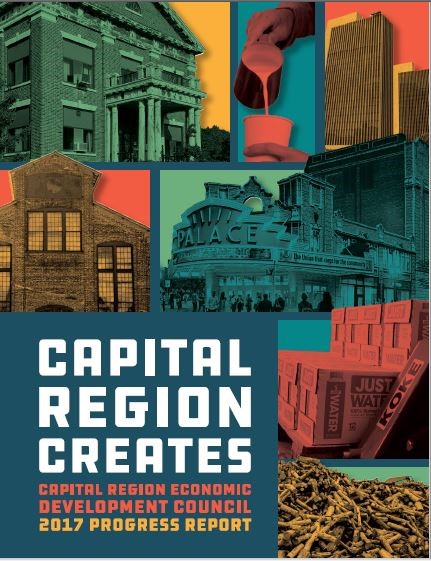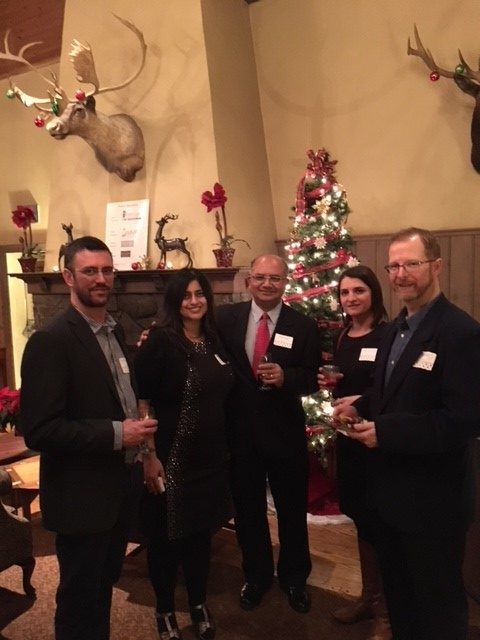President’s Message – January, 2018
Last November, when CEG held our 30th anniversary and annual meeting, the Capital Region’s support for our organization and its mission of driving economic growth throughout the region was on full display. More than 400 people joined us at the Hall of Springs in Saratoga Springs, making it our best-attended annual meeting throughout the three decades of our existence.
We continue to build on that momentum throughout the Capital Region. We entered 2018 with 233 investors, with the following ones joining CEG in the fourth quarter:
• Plug Power
• NAI Platform
• Mathes Public Affairs
• Rosenblum Co’s.
• Axiom Capital
• CommerceHub
• IntegraOptics
MACNY Apprenticeship Program
As the region looks to address the need for talent, CEG continues to bridge the gap in workforce development. We are addressing the needs of the business community to support job training.
Through the support of the Manufacturing Association of New York, CEG this month will launch the MACNY Apprenticeship Pilot program in the Capital Region. Under this program, CEG will serve as the intermediary between participating companies and the New York State Department of Labor (DOL). Throughout the course of Q1 2018, CEG will interview local companies to identify key trades to sponsor. This list of trades will be submitted to DOL along with an application for sponsorship. Once CEG and the selected trades are approved for sponsorship, we will begin to on-board apprentices (expected to be late Q2 or early Q3). Once an individual is on-boarded into the program, CEG will serve as the sponsoring entity and will be responsible for each apprentice over the course of the four-year training period. This will include managing the records and reporting that is required by DOL, as well as organizing each apprentice’s outside coursework.
Manufacturing Technology Pathways
In November, CEG and Hudson Valley Community College unveiled a Manufacturing Technology Pathways Project training program, which grew out of one of the key recommendations we made in the Pathways for Advanced Manufacturing study that we conducted last winter for the Capital Region Workforce Development Boards. Designed to fortify the Capital Region’s manufacturing workforce pipeline, the multi-level program involves a short noncredit, online course (Level 1), which can be followed by an 80-hour manufacturing boot camp that includes online courses, in-person instruction and lab work (Level 2). It will simplify the process for people looking to enter their first career or to change careers into a growing and high-paying sector. Level 1 classes start this month.
Amazon HQ2
Early this year, we expect to learn whether the Capital Region’s HQ2 bid will be selected as a finalist out of the 238 cities that are competing for Amazon’s proposed second headquarters, dubbed “HQ2.” Regardless of the outcome, we believe it was important for the region to compete in this competition. The bid allowed us to highlight our region’s strengths on the national stage while also arming us with in-depth research and marketing materials that can be re-purposed to attract other large employers. Preparation of the bid was also a good exercise in regional collaboration and the assessment of our sites, incentives and cost of doing business. We again thank our partners for their technical and financial assistance.

A rendering of CEG’s proposed Amazon Promenade
REDC Awards
For the second consecutive year, the Capital Region emerged as a “Top Performer” in last month’s Regional Economic Development Council (REDC) Awards, receiving $85 million in Round 7. That was 2.3 percent more than last year’s haul. Out of the $85 million, 56.5 percent of that amount will go toward 110 projects, with Excelsior Jobs Credits and Low Cost Economic Development Financing accounting for the rest. Seventy-five percent of the Capital Region Economic Development Council’s 2017 priority projects were funded, fetching a total $21.8 million.

The CREDC team at the REDC Awards in the Capital Center.
CEG played a lead role in preparing the Capital Region Economic Development Council’s 151-page 2017 Progress Report, which details the council’s progress in implanting economic initiatives, identifies priority projects and provides an overview of the state of the region. This report was part of the key criteria that the Strategic Implementation Assessment Team (SIAT) evaluated for the REDC Awards. Empire State Development, the University at Albany and Albany Medical Center provided vital support in developing the Progress Report, and Overit did a great job graphically designing it.
 |
CREDC’s 2017 Progress Report
We congratulate the CREDC and thank them for their hard work in developing this award-winning plan. We also congratulate and welcome the CREDC’s new co-chair, UAlbany President Havidán Rodríguez. He succeeds James R. Stellar, who is now the university’s provost and senior vice president for academic affairs.
Business Growth Solutions (BGS)
The Capital Region’s manufacturing sector received a boost from CEG’s Business Growth Solutions (BGS) unit. A National Institute of Standards and Technology (NIST) Manufacturing Extension Partnership (MEP) third quarter survey found BGS had the following economic impacts in the region:
• Improved Sales: $510,000
• Increased Investment in New Products = $120,000
• Invest in Plant/Equip = $60,000
• Invest in Workforce Practices/Employee Skills = $35,000
We received a 9.5 out of 10 Net Promoter Score (NPS). NIST uses the NPS to “evaluate [MEP] center and program performance relative to this performance measure.” MEP centers with an NPS between 10 and 9 and considered “promoters,” whereas those between 8 and 7 are “passive” and 6 and 0 are “detractors.”
Talent Connect
Talent Connect had a busy fourth quarter serving over 25 relocated new hires from our local investors. Of those, more than half requested career support for their spouse/partner that included making connections to our local recruiters and investors. All of them receive a thorough intake meeting with a staff member to discuss their wants and needs, with introductions to professionals for varied resources as well as cultural transitioning services for relocated internationals. All newcomers are also offered a guided city tour of one of our downtown cities. If you haven’t utilized the Talent Connect program and would like to learn more about it, please contact Joanne Bucher, Program Manager, at joanneb@ceg.org or 518-465-8975, ext. 222.
We continue to represent our investors including our higher education institutions and the region as a whole at career fairs outside the Capital Region. In October we exhibited at the Harford, Connecticut Career Expo and again back to Fort Drum in Watertown in November. In addition, we e-mailed résumés from career seekers interested in relocating to our region to you, our investors. We are in the process of scheduling career fairs for 2018 and will keep you informed.

Talent Connect at Fort Drum
On November 29 we hosted CEG’s Talent Connect Holiday Party at The Desmond. Newcomers, investors and sponsors enjoyed the evening with music by John Garafalo.
 |
Capital Region Newcomers at Talent Connect’s holiday party at the Desmond.
Conferences
CEG’s efforts to market the Capital Region’s core industries took us as far as Germany during the fourth quarter, and we hosted Europe’s semiconductor industry here, at SUNY Poly. In October, CEG organized a three-day Business Connection Forum with Silicon Europe and support from North American partners in Albany. This was the first international conference we’ve hosted that put the spotlight on not only our semiconductor assets but also those relating to autonomous operations, health applications, smart cities and advanced electronics. The event attracted more than 100 people and culminated in a memorandum of understanding (MOU) in which CEG and Silicon Europe agreed to, among other things, “facilitate collaboration and partnerships with businesses, academic institutions, government, and workforce development partners to build a skilled workforce pipeline for industries.”
A month later we continued our collaboration with Silicon Europe at SEMICON Europa in Munich. I sat on a panel organized by NY Loves Nanotech that also featured Michael Liehr Ph.D. (SUNY Polytechnic Institute), Adam Stover (Edwards), Jens Drews (GLOBALFOUNDRIES), and Peter Csatary (M+W Group).
Back in the states, CEG with NY Loves Nanotech sponsored the annual Semiconductor Industry Alliance (SIA) awards dinner for the 16th consecutive year. This event in San Jose is regularly attended by more than 400 business and industry executives. We also represented the region at the Industrial Asset Management Council Fall Forum in Richmond, Virginia and the Global Semiconductor Alliance (GSA) Awards Dinner Celebration in Santa Clara, California.
Looking forward, later this month we will be attending the SEMI Industry Strategy Symposium (ISS) U.S. in Half Moon Bay California.
Economic Scorecards
The region’s economic performance generally continued to grow at a steady pace, but a November surge in people looking for work pushed up the ranks of unemployed workers and the unemployment rate. However, those developments also gave the region’s labor force a needed boost. Despite signs of softening, the region’s manufacturing, transportation and retail trade sectors continued to perform strongly. Download the Q4 CEG Economic Scorecards.














